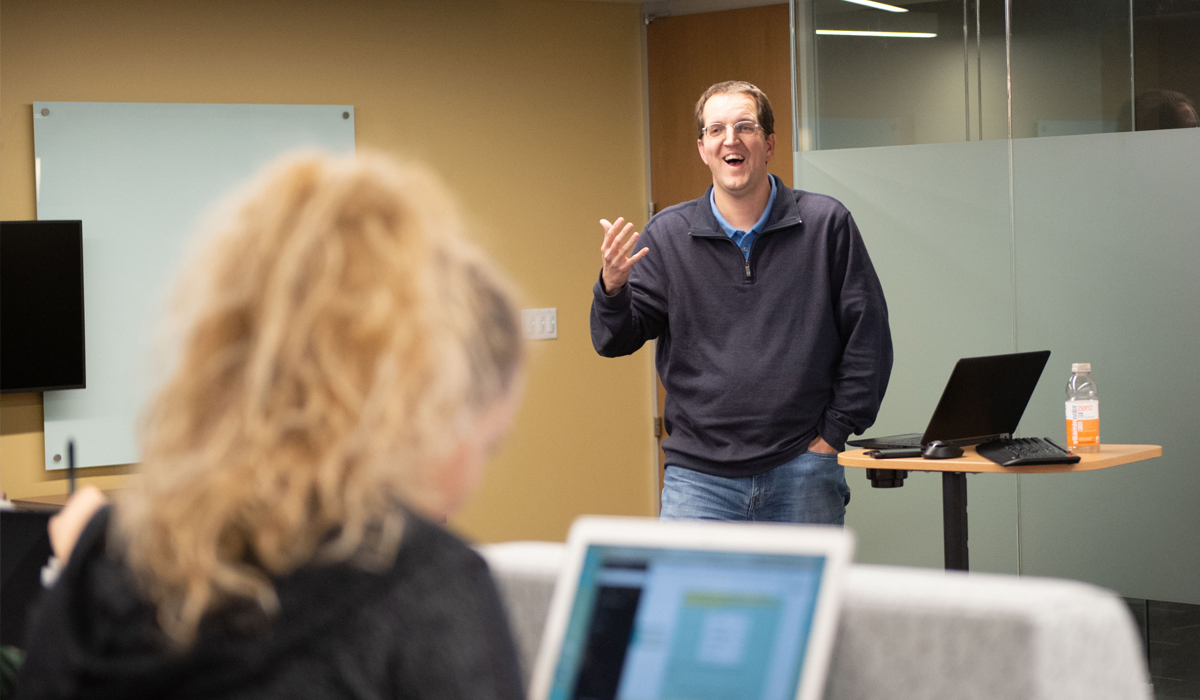
Entrepreneurs are known for their creativity and risk tolerance; engineers, mathematicians, and health care workers typically aren’t. Consider, for example, the ideal attributes of a civil engineer building an interstate bridge near your home. Do you picture a risk-tolerant engineer who is highly comfortable with uncertainty, or one who tends to prefer mathematical certainty?
Many people say the latter, but entrepreneurship—as well as the creativity and risk-taking associated with it—is an increasingly core component of commercial work, and one for which students in highly technical fields are ill-prepared. Blended entrepreneurial programs (BEPs) are attempting to answer this need by merging university-level entrepreneurial education with discipline-focused degrees in STEAM (science, technology, engineering, art and mathematics) fields. It hasn’t been easy. Administrators of these programs say they are underwhelmed by graduates’ intentions to exploit commercial opportunities as entrepreneurs or to act as intrapreneurs after entering the workforce.
In our research examining how to improve outcomes in BEPs, we identified an important noncurricular tension: STEAM students often showed a gravitation toward certainty and a low tolerance for risk— personal characteristics at odds with those traditionally associated with entrepreneurs. In addition, we found that students who had enrolled in BEPs sometimes had little interest in pursuing entrepreneurial ventures. For example, a doctoral student in a pharmacy BEP said that while she had initially been attracted to the entrepreneurial nature of the program, her final enrollment decision came down to more practical matters such as financial aid, proximity to home, and the program’s strong record of job placement.
Developing entrepreneurial mindsets in STEAM students is important. Increasingly, opportunities for innovating and creating new products and startups are found in the highly specialized fields of applied math, health care, bioinformatics, chemistry, and technology. Yet our findings lead us to ask: Can entrepreneurship be taught in BEPs?
We’ve concluded that it can, and should be, but that attracting students who have some entrepreneurial attributes prewired may be crucial. BEPs and universities may not be able to rely on an “if you build it, they will come” strategy. This mismatch in students’ initial entrepreneurial intentions and need for a more certain outcome—a job, for example—undermines many BEPs.
Administrators should also look closely at the curricula they offer. Entrepreneurship education historically has focused on developing small business management and planning competencies, but has put relatively less emphasis on cultivating students’ entrepreneurial mindsets. In BEPs we found that students’ entrepreneurial passion—defined as passion for innovating, inventing, developing, and founding new ventures—strongly predicts the likelihood of their planning entrepreneurial activities. The more traditional program elements noted above had little impact on their ambitions.
BEPs are rigorous programs: Students must complete their technical curriculum as well as the business curriculum. Harnessing all the entrepreneurial attributes of innovating, inventing, developing, and founding new ventures simultaneously within a single academic program may not be possible. Based on our research, we suggest that BEP administrators do three things. First, they should recruit program candidates who already have entrepreneurial attributes. Developing students’ existing attributes is a more promising approach than trying to create them from scratch. Second, they should bifurcate curricula that teach the skills needed to start or grow a venture from curricula that teach students to identify entrepreneurial opportunities. Developing opportunity recognition in highly specialized knowledge areas is extremely valuable, and is a valuable precursor to entrepreneurial action in graduates. Third, they should deepen their focus rather than continually broadening their programs with more content.
Our experience is that deepening BEPs by emphasizing only a few critical concepts is the better choice for newer, resource-scarce programs that are still developing the required organizational capabilities. BEPs that successfully match students’ entrepreneurial attributes and development stand to help meet firms’ increasing demand for entrepreneurial graduates.
Dr. Peter Gianiodis is the Merle E. Gilliand Professorship in Entrepreneurial Finance and Associate Professor of Strategy and Entrepreneurship at Duquesne University.
Dr. Tobin Turner is an Associate Professor of Economics and Business Administration at Presbyterian College.
Copyright 2018 Harvard Business School Publishing Corporation. All rights reserved.